#ayurveda deal
Text

𝑫𝑵𝑷𝑳 𝑻𝒓𝒖𝒆 𝑯𝒆𝒓𝒃 𝑯𝒂𝒊𝒓 𝑶𝒊𝒍
D𝐢s𝐜o𝐯e𝐫 𝐭h𝐞 𝐧a𝐭u𝐫a𝐥 𝐩a𝐭h t𝐨 𝐫a𝐝i𝐚n𝐭 𝐡a𝐢r.
hairfall #hairloss #hairlosstreatment #hairfalltreatment #ayurvedadeal #ayurvedichairfalltreatment #naturalhair #DNPLTrueHerb
𝐁𝐮𝐲 𝐍𝐨𝐰 : Mobile : +91-800 640 0747 | E-mail : [email protected] | Website : https://rb.gy/zczui
0 notes
Text
#Shilajit#Pure Shilajit Resin#Vedikroots Ayurveda#Best Deals On Shilajit#Resin and Capsule both Available
1 note
·
View note
Photo

Flat 50% OFF on Kumkumadi Range for youthful skin complexion as well as reduce signs of aging!!
✨Hurry Up Limited Time Period Offer✨
.
Shop Now:- http://bit.ly/3kJpdCi
.
#khadiorganique #natural🌿 #organic #auravedic #herbal #kumkumadi #naturalingredients #naturalskincare #darkspots #aging #hyperpigmentation #beautyproduct #facewash #kumkumadicream #glowingskin🌱 #skinlightening🌱 #skinbrightening🌱 #kumkumadifaceserum #kumkumadioil #💯% natural
0 notes
Text
Retrograde Planets in your Birth Chart
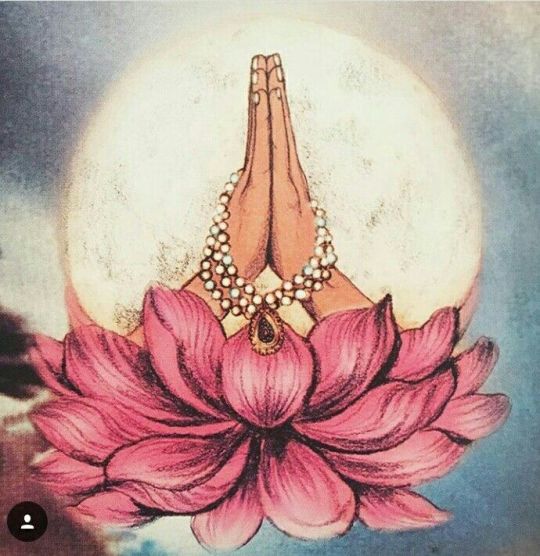
In Vedic astrology, retrograde planets in a natal chart carry deep significance and unique implications. A planet is deemed retrograde when it appears to move backward in the sky from Earth's perspective. This apparent reversal can alter the planet's energy, leading it to express itself differently than it would when moving direct. Retrograde planets often highlight areas in our lives where we have unresolved issues from past lives or where we need to focus more intently in this life. Understanding the benefits and challenges of retrograde planets can offer profound insights into your life's journey.
Mercury
Having Mercury retrograde in your birth chart means you process information and communicate in a unique way. You possess deep insights, particularly when it comes to introspection and understanding complex ideas. This can lead to innovative solutions and profound personal insights. However, communication can sometimes be tricky. You might find that others misunderstand you or that you have to work harder to express your thoughts clearly. Issues with technology or travel plans may also arise more frequently. To manage this, practice mindfulness and patience in your communication. Double-check important messages and take your time to articulate your thoughts. You can also calm your mind with Brahmi oil massages, an Ayurvedic practice that enhances clarity and cognitive function.
Venus
With Venus retrograde in your birth chart, you have a deep understanding of what you truly value in relationships and personal finances. This can lead to a stronger sense of self-worth and more meaningful connections. Your approach to beauty and aesthetics is unique and deeply personal. However, you might experience challenges in love and financial stability, feeling strain in relationships or difficulties with self-esteem. Focusing on self-love and healing past relationship wounds can be beneficial. Use Ayurvedic rose oil for self-massage to open your heart chakra and promote self-love, helping you attract healthier relationships and financial stability.
Mars
Mars retrograde in your natal chart endows you with inner strength and resilience. You can be strategic and thoughtful about how you use your energy and pursue your goals, making you a powerful force when you decide to act. However, there might be a sense of frustration or impatience, as it can feel like your efforts are often delayed or blocked. Channeling your energy into long-term projects and practicing patience can help. Regular physical activity, like yoga or Ayurveda-recommended exercises, can manage frustration and keep your energy balanced. Incorporating Ashwagandha supplements into your routine can also reduce stress and boost vitality.
Jupiter
Having Jupiter retrograde in your birth chart gives you a profound capacity for inner growth and spiritual wisdom. You’re likely to develop a strong set of beliefs and philosophies that guide you throughout life, making you wise beyond your years. However, external growth might feel slow, and opportunities for expansion could be limited, requiring you to work harder for your achievements. Focus on your inner journey and trust that external success will follow. Including turmeric in your diet promotes overall health and well-being, supporting both physical and spiritual growth.
Saturn
Saturn retrograde in your natal chart means you have a deep understanding of responsibility and discipline. This can help you build strong foundations in your life and deal with karma and past life issues effectively. However, you might feel increased pressure to revisit old fears and insecurities, and responsibilities could feel more burdensome. Embrace the opportunity to strengthen your foundations. Practice grounding techniques, like walking barefoot on grass, and use Ayurvedic grounding oils like sandalwood to help you stay balanced and focused.
Retrograde planets in your natal chart bring both challenges and unique strengths. Embrace the lessons they offer, and use these insights to grow and transform. By incorporating Ayurvedic practices, you can balance these energies and navigate their influences with greater ease. Remember, each retrograde planet offers an opportunity for profound personal growth and a deeper understanding of your life’s journey.
#vedic astrology#astrology#sidereal astrology#nakshatra#sidereal#vedic#jyotish#desi#retrograde#birth chart#indian
207 notes
·
View notes
Text
Herbalism in Times of Turmoil
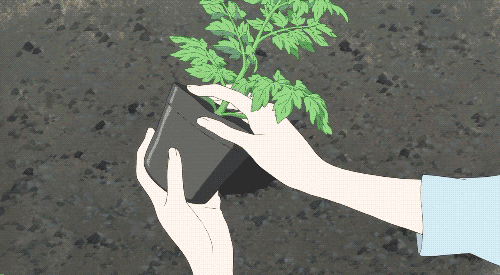
I've recently returned to my roots (pun intended) in folk herbalism to supplement the work I'm doing with my therapist. It wasn't an intentional thing -- in our current round of EMDR, we've uncovered some deeply buried trauma, and bringing that trauma to the surface has shaken the foundations of how I see myself and the world around me. I feel very raw and vulnerable. I feel disoriented and fragile.
I find myself drawn to plant medicine as I navigate this trauma with the help of my therapist. I think a part of me longs for the sympathetic magic of plants -- by taking them into my body, maybe I, too, can become firmly rooted, supported by the earth and nourished by the sun. Maybe I can relearn the magics of stillness and connection. Maybe I can reintegrate into the earth's cycles of death and rebirth.
Some of the plants I'm partnering with in this work are old friends. Others are new allies, recommended by professional herbalists for the type of trauma I'm processing. All of them are supportive in different ways, and all of them have important lessons.
Obviously, I am working with herbs as a compliment to the work I'm doing with a professional mental health counselor, not as a replacement for medical/psychological care. I recommend you do the same, especially if dealing with complex trauma. Even if money is tight, you may be able to get free or low-cost counseling through local social services, nonprofits, university hospitals, etc.
How I Work with Herbs
As an animist, I see working with herbs both as physical medicine and as a working relationship with the spirit of the plant. I don't like to say that I "use" herbs, because that implies that they are just tools. When I say I "work with" an herb, what I mean is that I am partnering with that plant as a living, thinking being that has kindly chosen to support my healing process. I try to honor that relationship in every part of my herbalist craft.
One way I do this is by verbally thanking the plants that I consume as medicine. If I'm drinking a cup of linden tea, I'll say something like, "Thank you, linden, for aiding in my healing today."
I try to use herbal preparations that allow for a sensory experience to help me connect with the plant spirit(s). I don't like taking capsules full of powdered herbs, because that doesn't allow me to see, touch, smell, or taste the plant. I like teas because they allow for a much more intimate connection with the plant's spirit, and I use tinctures when I feel like I need more concentrated medicinal compounds.
I'm a witch who loves plants, but when I'm working with herbs internally, I do not choose them based on their magical or spiritual correspondences. When choosing herbs, I look for quality scientific studies that prove their medicinal benefits, but honestly a lot of plant medicine hasn't been sufficiently studied yet. Because of this, I also look at the way plants are viewed in traditional healing modalities like Western herbalism, Ayurveda, Traditional Chinese Medicine, etc.
While I don't pick them based on their magical properties, I do think studying how these plants are used in magical practices can add an extra layer to my work with them. This helps me to have a more nuanced, deep, and complex relationship with the plant's spirit.
And of course, I always research contraindications and drug interactions before using an herb. For example, I don't recommend Saint John's Wort to anyone taking any kind of pharmaceutical medication because it really messes with the way your body processes your meds. It's also important to research how herbs might interact with other herbs and supplements you're already taking -- that's also a type of drug interaction!
I also try to remember that when we're moving through grief or processing trauma, this changes the way herbs (and drugs, for that matter) affect our bodies. I highly recommend the book The Trauma-Informed Herbalist by Elizabeth Guthrie to learn more about this.
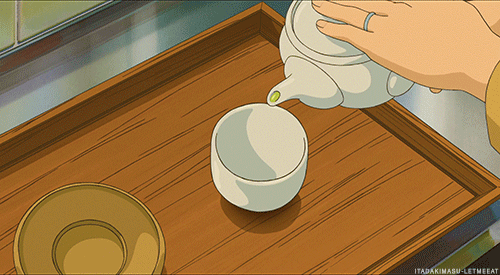
My Herbal Allies
These are the herbs I'm taking focusing my practice on right now:
Ashwagandha and Tulsi are two plant friends that I love pairing together. They're both adaptogens, meaning they can help manage the body's stress response, and come to Western herbalism by way of Ayurveda. I've been working with both of these plants for years, and although they do have different uses, I think they work really well together.
Ashwagandha is really helpful as a pick-me-up for the endocrine system (the system that produces hormones) and nervous system. I find that it has a very grounding effect and is especially helpful for when I feel overwhelmed or burned out. It's a great ally for building resilience when you feel like there's just way too much going on and have no idea how you're going to handle it all. It has a very bitter taste, so I usually add it to coffee or another very bitter beverage.
Tulsi, also called Holy Basil, is a lot more gentle and laid-back than ashwagandha, at least in my experience. It's one of my go-to herbs when I need emotional support. According to herbalists Katja Swift and Ryn Midura, "Tulsi has traditionally been the herb of choice for 'stuck emotions,' whether that's depression or PTSD or just a case of the grumpies." It has a delicious taste somewhere between basil and mint, and I love preparing it as a hot tea. This is one of my favorite herbs right now.
In Ayurveda, ashwagandha is classified as a Rasayana, which means it rejuvenates the body and can promote long life. It is also a Bhalya, meaning it promotes strength, and a Vajikara, which means it promotes healthy sexuality. Tulsi is one of the most valued herbs in Ayurveda and is even called the most sacred plant on earth in the Vedic Puranas. It increases sattva (light, clarity), uplifts the spirit, promotes joy and harmony, and increases prana (vital energy; similar to the concept of chi in China). They're sometimes used together because they're believed to support each other and enhance each other's effects.
I add ashwagandha and tulsi tinctures to my morning coffee and to other hot beverages throughout the day. I also really like tulsi as a tea, and tulsi tea is one of my go-to tools for replenishing my energy after a long day of tarot readings. That being said, I'm considering changing the way I consume these herbs to be more in line with traditional Ayurvedic practices, but I need to do more research first.
Cannabis is, honestly, one of my personal miracle workers, which is a little bit ironic because I also think it's waaaaay overhyped in the wellness industry right now. Cannabis is not a cure-all, and it is not recommended for everyone. There are several different types of cannabis, and each type has its own medicinal uses. For example, the cannabis I use in my personal practice is hemp, which is legally defined as cannabis with little to no THC, meaning it does not produce a high. Marijuana, the type of cannabis with THC, is powerful medicine for some people, but because of how my body and brain work, I personally don't use it. While marijuana use may be illegal depending on where you live, hemp is legal in most places.
I started working with cannabis several years ago to help manage anxiety and insomnia, but nowadays I mostly work with it to help with inflammation and chronic pain.
I find that my body really holds on to trauma in the form of tension, inflammation, and chronic pain. When my trauma response is triggered, I usually feel it as tension or pain, especially in my hips, pelvis, and lower back. I find cannabis really helpful for that stored trauma. It doesn't make the pain go away, but it helps me feel into it and navigate through it. I also find cannabis is really good at relaxing my body and helping me let go of that stored up trauma, almost like unclenching a fist.
Cannabis was historically used throughout the ancient world for divination and religious ritual. It's associated with connection to the spirit world, and may have been used in magical practices like the Norse practice of seidr. Scott Cunningham says hemp is associated with love spells and with Midsummer.
My favorite way to work with cannabis is with a cannibidiol (CBD) isolates. Since I live in a place where THC is illegal and have some health conditions that don't play well with THC, I like CBD isolates because I'm able to make sure I'm getting a THC-free product. I add CBD to my coffee along with tulsi and ashwagandha, and I feel like it helps me process the caffeine better. I also notice rapid relief for joint and nerve pain, anxiety, and intrusive thoughts after drinking this brew.
Meadowsweet is a new plant friend for me. I actually first came across meadowsweet when I was researching handfasting herbs -- it's a traditional inclusion in British handfasting and wedding ceremonies, and was historically used as a "strewing herb," which means it was sprinkled on the ground. It's also a traditional flavor in mead, and in fact the name "meadowsweet" comes from its traditional use in mead-making. (I actually have a batch of meadowsweet mead fermenting right now!)
In herbalism, meadowsweet is prized because it contains salicylates, which can be used to make salicylic acid, the main ingredient in aspirin. This makes it great for pain, especially pain caused by inflammation. It's also great for your digestive system, which makes it a powerful ally if, like me, you suffer from the dreaded "anxiety tummy."
Meadowsweet is a very summer-y plant for me, and its energy reminds me of summer sunshine. It's a plant that reminds me to find joy in the little things in life, and has a very hopeful vibe. This is a plant I associate with both Midsummer and Lughnasa. It's a great friend for when you just need a little sweetness in your life.
On a more physical level, I combine meadowsweet with cannabis, ashwagandha, and tulsi to manage chronic pain rooted in trauma. And, of course, for keeping the anxiety tummy at bay.
In European magic traditions, meadowsweet is associated with love, peace, and joy. Interestingly, Scott Cunningham also talks about the use of meadowsweet for protection from thieves.
I add meadowsweet tincture to my morning coffee along with ashwagandha, tulsi, and CBD. I also really enjoy it as a hot tea, and I think the flavor blends really well with tulsi.
Linden is another new friend for me, but I am obsessed. I don't think I've ever worked with an herb that feels this gentle, supportive, and nourishing to the soul. Katja Swift and Ryn Midura of the Holistic Herbalism Podcast call linden "a hug in a mug," and I think that's a perfect description of how it feels.
In Western herbalism, linden is most often used for heart conditions and to restore the cardiovascular system. However, it also works as a nervine, which means it has a calming effect on the nervous system. It can provide gentle relief for anxiety, tension, and even everyday stress. In Herbal Medicine for Beginners, Swift and Midura even recommend linden to "mitigate the side effects of drying, stimulating medications like Adderall and Ritalin." It is also recommended for nerve pain and damaged nerves.
Linden is wonderful medicine for the heart, both the physical heart and the emotional heart. I really do feel an improvement in my mood when I work with linden. It's soothing and uplifting at the same time.
Magically, linden is strongly associated with protection. It's also associated with love, good luck, and preventing insomnia. Scott Cunningham mentions carrying linden to prevent intoxication.
My favorite way to work with linden is by drinking it as a tea. It tastes similar to chamomile, but a little less fruity. I drink several cups throughout the day, especially when I feel like I need to unwind or calm down.
Rose is one of my favorite flowers. Maybe that makes me basic, but I really do love this plant. The scent of rose has been one of my favorite scents since I was very small -- I remember going to Catholic mass with my mom and praying with my own rose-scented rosary!
We usually think of rose as a decorative flower or an ingredient in perfume, but it also has culinary and medicinal uses. It's used topically to treat skin issues by promoting the growth of new skin cells and to treat rashes and eczema. It can also help soothe gut problems. Rose is also relaxing and anti-inflammatory.
In magic rose is associated with love and romance (duh), divination, healing, fast luck, protection, and connection to the divine. Cunningham recommends it for calming "personal stress and household upheavals" and says the flowers attract fairies. This might be because I was raised Catholic, but rose feels like a very sacred plant to me. In Catholicism it's associated with the Virgin Mary and with some other saints like St. Therese of Lisieux, but I personally use rose more in ancestor work (especially when working with queer ancestors) and for attracting friendly spirits in general.
Right now, my favorite way to work with rose is in aromatherapy. The smell of fresh roses is so uplifting, and it makes me feel like I'm surrounded by gentle, loving protection. I'm sure there are probably health benefits to working with the pure essential oil, but real rose essential oil is VERY expensive, so I use a mild rose-scented perfume instead. (I'm very sensitive to scents and often get headaches from artificial fragrances, but right now I'm wearing Pacifica Beauty's Persian Rose perfume and I haven't had any issues with it.)
Sources:
Herbal Medicine for Beginners by Katja Swift and Ryn Midura
Queering Herbalism, 3rd edition, compiled by Toi of the Herbal Freedom School
The Trauma-Informed Herbalist by Elizabeth Guthrie
Cunningham's Encyclopedia of Magical Herbs by Scott Cunningham
All episodes from the first season of The Trauma Informed Herbalist podcast, but especially the two-part series, "How Trauma Changes Us"
"Herbs for Psychological First Aid" from The Holistic Herbalism Podcast
"Herbs & the Holidays: Emotional Support" from The Holistic Herbalism Podcast
"Working With Herbs For Chronic Pain" from the Holistic Herbalism Podcast
"The Centuries-Old Secrets of Gender-Affirming Herbalism" by Leah Kirts
"How To Incorporate Hemp In Your Materia Medica" by Heather Saba
"Cannabis: Potent and Versatile Medicine" by Sue Sierralupe & Candace Hunter
"An Ayurvedic perspective on Marijuana" by Shilpika Devaiah
"Who shouldn't use medicinal cannabis?" by Corinne Hodgson
#herbalism#plant medicine#plant magic#green witchcraft#green witch#trauma#trauma healing#complex trauma#ashwagandha#tulsi#ayurveda#cannabis#cannawitch#meadowsweet#linden#rose#tea magic#tea witch#kitchen witchcraft#kitchen witch#queer herbalism#witchblr#witch#herbs#animism#animist herbalism#long post#my writing#mine
448 notes
·
View notes
Text
Mula Nakshatra: The Primordial Cosmic Force.

versão em pt-br
Tropical Astrology orients the zodiac to the point of the Vernal Equinox, which marks the beginning of the sign of Aries. Vedic astrology orients the zodiac from the 'Galactic Center' to the center of the Galactic Sun, where influences pass through us via the fixed constellation of Sagittarius. The Galactic Center is called 'Brahma,' the creative force, or 'Vishnunabhi,' the navel of Vishnu. From the Sun emanates the light that determines life and intelligence on Earth, directing the seven rays of creation and the distribution of Karma.
In terms of sidereal astrology, the Galactic Center is located at the beginning of Sagittarius. In the Vedic system, it is found in the lunar constellation (nakshatras) called 'Mula,' which means 'the root' or 'origin.' Mula can thus be seen as the first in the series of lunar constellations. It marks 13º 20' of Sagittarius, in the middle of which the Galactic Center is located. The last in the series of lunar constellations is Jyeshta, which means 'the eldest,' found at the end of Scorpio. This shows that the ancients knew of the Galactic Center and named the constellations accordingly. The Mayans identified the Galactic Center as Hunab Ku, representing the Supreme God and Supreme Creator. It is considered the 'Mother's Womb' that constantly gives birth and gave birth to the Sun and the planet Earth. It is believed that Hunab Ku directs everything that happens in the Galaxy from its center through the periodic emission of 'Consciousness Energy.'
The energy of the Galactic Center is primarily transmitted by Jupiter, called 'Guru,' the teacher in Vedic astrology, and by Sagittarius. Jupiter is said to be the teacher of the Gods, the cosmic power of light. In this regard, he is even the teacher of the Sun, the guide of the world. Jupiter represents and directs Galactic Light to the solar system.
This association of Mula with the Galactic Center suggests a strong connection to primordial and cosmic forces, symbolizing the ability to access deep and transformative wisdom that may surface from intense experiences or a spiritual quest. The strong influence of Mula may manifest as a deep connection with these cosmic energies, reflecting a desire to get to the core of issues and seek the truth in its rawest and purest form.
Ketu, the planet that governs Mula, also deals with reaching the core of everything. It stores past Karmas and releases those mature enough to be experienced in the present. It can help gather the necessary tools to fulfill the objective of the present life. This is suggested by the symbolism of the tied roots. Mula, therefore, helps in gathering, meaningfully, the talents developed in past lives.
Mula is concerned with investigating invisible or unknown things. Along with its counterpart Ardra (which lies directly opposite in the zodiac), Mula has the strongest and deepest sense of investigation among all nakshatras. Mula is directly associated with medicinal purposes. In ancient medicinal systems like Ayurveda, roots of various plants are used for medicine preparation. Similarly, Mula is also related to the root of diseases, such as microorganisms like viruses, bacteria, etc. Like everything under Mula's jurisdiction, these microorganisms are invisible to the naked eye. The fact that the roots are tied suggests a sense of limitation. As a result, Mula often does not allow much freedom or dispersion of energies, causing people to dive deep within a limited sphere.
Mula Nakshatra is deeply connected to the figure of Nritti, a powerful and enigmatic goddess of Vedic mythology. Nritti is often associated with destruction, chaos, and dissolution, but her influence goes far beyond just being a destructive force. She represents the primordial forces that deconstruct and dismantle to allow something new and more authentic to emerge. Nritti is the goddess of transformation through destruction. She governs the process of disintegration necessary for renewal and regeneration, reflecting the idea that for growth to occur, something old must be undone. In many ways, Nritti can be seen as the guardian of the boundaries between the known and the unknown, between comfort and chaos, symbolizing moments of crisis that challenge old structures and beliefs, paving the way for personal and spiritual development. Mula's symbol is a bundle of tied roots, representing the exploration of origins, the unveiling of deeper truths, and the search for the essence of any situation. However, to reach the roots, one must undergo processes of destruction and deconstruction, aspects deeply connected to Nritti's energy. Those who have significant planets in Mula Nakshatra may experience intense moments of destruction and rebirth throughout their lives, being called to abandon old identities, beliefs, and situations to transform into something new and more authentic.
Nritti's influence on Mula also emphasizes the importance of facing chaos and the unknown as part of the path to enlightenment. Mula is the nakshatra of deep investigation, where the sought truth is revealed, often in a harsh and challenging way. Nritti guides this quest, ensuring that illusions are destroyed so that the truth, no matter how raw, can emerge.
It is in Mula's nature to quickly cut and destroy things that have lost their value. Most often, it regrets its actions in hindsight. Only when its Universal will is aligned does Mula operate in a wise, Jupiterian manner. The struggle between universality and individuality reaches its peak here, as individuality is at its highest expression. The process of individualization begins in Ashwini, is celebrated in Magha, and culminates with completed individual experiences in Mula. Beyond the realm of the ego and egocentrism, Mula is a proud and arrogant nakshatra, often unable to comprehend its own power and abilities. In some cases, this is good, as its capacity to inflict damage on itself is restricted by its ignorance. Its terrible and demonic side comes from Ketu's negative functioning in its lower aspects, potentially generating ego, vanity, and arrogance, which can lead someone to commit abominable and demonic actions.
#astronomy#jyotish#vedic astrology#astrologia#vedic astro observations#nakshatra#spirituality#spiritual awakening#dark moon#astrology#numerology#dark femininity#dark feminine energy#dark feminine aesthetic#sidereal astrology#vedicastrology#psicology#psicologia#thriller psicologico#ketu#rahu ketu#mula nakshatra#moola#moola nakshatra#nritti#goddess#vedic astro notes#sagitario#sagittarius#signos
17 notes
·
View notes
Note
✨, 🌱, 💡?
✨ A game I wish more people were talking about
There aren't many indie games that are talked about enough as far as I concerned. So many great games have come out recently that deserve way more discussion and praise: Pasion de la Pasiones by Brandon Leon-Gambetta and Swords without Master by Epidiah Ravachol are at the top of my list.

Pasion de la Pasiones is a masterclass of PbtA design - in many ways, a true inheritor of Apocalypse World's inter-personal playstyle. A playbook like El Jefe (which I'm playing in a game right now) is such a beautiful piece of design. Another designer would have made that character the GM's responsibility, to be played as the villain. Like the hardholder in AW, Brandon Leon-Gambetta trusts the players to take on the roles required to play a cheesy, melodramatic telenovela. At the same time, it's not just up to the players - through excellent move design, it's easy to be an awesome player. Also by empowering players, Pasion de la Pasiones is designed to be fun for the GM as well. It serves up exactly what I cherish most - the ability for players to drive play. I know lots of folks might see the cover and think it's just not for them but I encourage them to give it a try and see the fun on offer.
Swords without Master is amazing for the same reasons. It's a game with a GM that completely trusts the players to make their own fun - to come up with fun questions and fun answers. For those who don't know, it's a sword and sorcery RPG that has a bunch of unique things - dice that decide tone, a motif mechanic, phases that feel like they swap between GMless and GM'd. It also represents that rare thing. Like PbtA, it's basically a whole new type of game, designed from the ground up. It hasn't been as influential but it could have been!
🌱 An unreleased/not-yet-crowdfunding game I’m looking forward to
Oh, man, okay, I've got a couple for this:
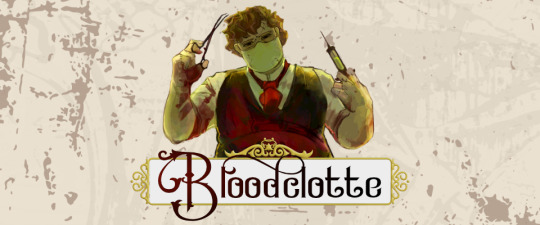
Bloodclotte by Nick Duff: This is a hard game to describe but here's my best shot: You play doctors in a steampunk hospital dealing with the weirdest, most bizarre patients that you can conceive. It's less medical drama and more war comedy, a genre that is so rare that the only good example I know is the iconic 70s show, M*A*S*H. It's really good and I'm writing a playbook for it based on Ayurveda. There's a quick start available and I played a super fun playtest campaign of it. Recommended!
Da Xia by Tan Shao Han: Tan Shao Han is a Singaporean designer who is also a writer on Bloodclotte, like me. This game of his (which I have only heard the most delicious whispers about) is a Forged in the Dark game where you play Chinese folk heroes in Singapore during WW2 when it was under Japaneese occupation. I love the concept - it sounds challenging and ambitious work for a designer as well as a unique experience for players. Super excited to get my hands on a playtest draft.
💡 A game that inspired my own design or creative practice

I'm working on a series of card-based games I'm calling the Cardsharp Sonata. The first one is out and it's a sci-fi horror game called This Ship Is No Mother. The entire series is based on the wonderful, insightful Forged in the Dark game Crash//Cart by Galen Pejeau. Crash//Cart is one of the first games I ever wrote about the newsletter after a smash-hit of a one shot. It's about EMTs going out to save people and take them to hospitals in a nightmarish cyberpunk world. It's fast, fun and Galen's sharp design logic really inspired me to make more games.
36 notes
·
View notes
Text
DISCOUNT ON BESTSELLING COMBOS!
At night, use Manjish Glow Elixir® With Indian Madder, Wild Lemon and Butter Tree Glow-Giving and Complexion Restoring Night Facial Massage Oil, Ayurveda’s Pink Power Potion
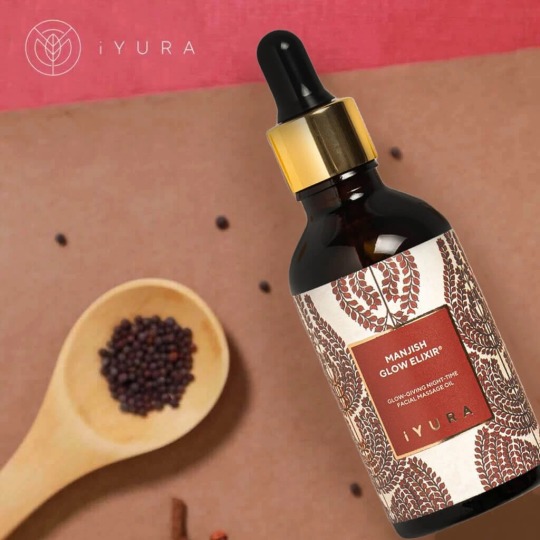

A beautiful pink colored elixir, this face oil is specifically meant for patchy skin as well as dull and uneven skin tones, and those who're not very keen to use heavy oils on the face. This oil is not your usual face oil. In some countries, formulations like Manjishthadi Oil are treated at par with medicinal products!
With no added fragrance at all, this herbal oil contains some very interesting and highly effective ingredients like Indian Madder or Manjishtha, Butter Tree or Mahua, Lemon or Jambheer and Shellac or Lakh amongst other well-known ingredients like Licorice, Cow Milk and Sesame Oil.
To quote ancient Ayurvedic texts: “Massaging with this oil helps dealing easing the appearance of spots. It clears the look of the face (evens the skin tone) and eases the appearance of wrinkles. Massaged for seven consecutive nights, it makes the face glow as if it was gold!”
#artists on tumblr#artwork#ayurvedic doctor in ghaziabad#ayurvedicmedicine#ayurvedictreatment#ayurvedic doctor in allahabad#animation#ayurvedic doctor in rajkot#ayurvedic treatment#ayurveda#ayurvedic medicine#pure herbs#kalyan#dombivli#skincare#skincareproducts#acne skincare#skin cancer#skintight#face#elsa hosk#pretty face#elegant#beautiful#india#spiderman india#indian#india love
31 notes
·
View notes
Text

Overview of Ayurvedic skincare
Ayurveda, the ancient Indian system of medicine, has long been revered for its holistic approach to health and beauty. Ayurvedic skincare focuses on achieving balance and harmony within the body, which in turn reflects on the skin. Unlike conventional skincare that often relies on harsh chemicals, Ayurveda emphasizes the use of natural ingredients to nourish and rejuvenate the skin.
Benefits of Manjistha for skin
Manjistha, also known as Rubia cordifolia, is a key player in Ayurvedic skincare. This herb is packed with a multitude of benefits that can transform your skin. One of the most notable benefits of Manjistha is its ability to detoxify the body and purify the blood. By eliminating toxins from the system, Manjistha helps to promote a clear and radiant complexion from within.
In addition to detoxification, Manjistha also possesses powerful antioxidant properties. These antioxidants protect the skin from free radicals, which can cause premature aging and other skin concerns. Regular use of Manjistha can help to combat fine lines, wrinkles, and sagging skin, resulting in a more youthful appearance.
Understanding the properties of Manjistha
To fully appreciate the benefits of Manjistha, it is essential to understand its unique properties. Manjistha is known for its bitter taste, indicating its powerful detoxifying nature. It has a cooling energy, making it particularly beneficial for those with Pitta dosha, characterized by sensitive and easily inflamed skin. Its red color signifies its affinity for the blood, where it works its magic to purify and rejuvenate.
Manjistha also possesses anti-inflammatory and antimicrobial properties, making it an excellent choice for those dealing with skin conditions like eczema, psoriasis, and acne. Its ability to reduce inflammation and kill bacteria helps to soothe irritated skin and prevent further breakouts.
How to use Manjistha for beautiful skin
Now that we understand the benefits and properties of Manjistha, let's explore how to incorporate this powerhouse herb into your skincare routine. Manjistha can be used both internally and externally to reap its full benefits.
Internally, Manjistha can be consumed in the form of capsules, tablets, or as a powdered herb mixed with warm water or milk. It is recommended to consult an Ayurvedic practitioner to determine the appropriate dosage for your specific needs. Regular consumption of Manjistha internally helps to purify the blood and promote overall skin health.
Externally, Manjistha can be used in various ways. One popular method is to create a Manjistha paste by mixing the powdered herb with rose water or aloe vera gel. This paste can be applied to the face and body, left on for 15-20 minutes, and then rinsed off with lukewarm water. This simple yet effective mask helps to brighten the complexion, reduce pigmentation, and promote a healthy glow.
#vividnature#skincare#glowing skin#manjistha#herbal#beauty#face serum#plantbased#ayurveda#wrinklesfree#youthskin#antioxidant#rejuvenatingskin#healthylifestyle
3 notes
·
View notes
Text
Understanding Ayurvedic Principles: A Holistic Approach to Health

Ayurveda, the ancient Indian medical system, advocates a holistic approach to health that emphasizes the relationship between body, mind, and spirit. We embody these principles by incorporating traditional wisdom into our services, providing a holistic approach to health. We are the best online pharmacy store in Lucknow that offers you amazing deals and discounts on your drug. You have to do only one thing: just visit our website or app to get your medicines.
At the heart of Ayurveda are the doshas – Vata, Pitta, and Kapha – which represent the unique elemental combinations within each principle. We understand the importance of doshas and design their formulations to address specific imbalances, realizing that each person’s constitution requires an individual approach.
What is the holistic concept of health in Ayurveda?
Ayurveda is mainly based on herbal remedies made from natural ingredients such as herbs, minerals, and minerals. We adhere to this tradition, formulating medicines using precise processes to ensure their effectiveness and safety. Harnessing the healing power of nature, we provide holistic solutions rooted in the principles of Ayurveda let’s check out. Are you looking for an online pharmacy store in UP for your medicinal needs that provides your drug on time with proper services? So worry not we are here to help you out now you can get your drugs with the best service or on time.
What is the Ayurveda approach to health?
Dietary Harmony: Balancing the doshas through food
Ayurveda attaches great importance to diet as a tool for maintaining balance. We offer nutritional recommendations tailored to an individual’s dosha, recognizing that certain foods may exacerbate or mitigate these elemental components. This personalized approach to nutrition is an essential aspect of Rigmed's Total Health. Now you can order your ayurvedic products online with the help of our website or mobile application so stop searching here and there when we are there!
Treatment of physical and mental balance
Ayurvedic treatments, including massage, detoxification, and meditation, are an integral part of maintaining overall health. We combine these treatments as complementary elements to drug treatments. To address physical and mental health, we apply the holistic philosophy of Ayurveda.
Agni: digestive fire
The concept of Agni, or digestive fire, occupies a central place in Ayurveda. We understand the importance of supporting healthy digestion. Herbal formulations are designed to enhance Agni and ensure optimal absorption of nutrients and elimination of toxins, thus contributing to overall health. Are you searching for Ayurvedic products? We offer online ayurvedic products with proper service and time because we always take care of your health.
Swasthavritta: A balanced lifestyle
Ayurveda endorses Swasthavritta, focusing on a disciplined and balanced life. We promote this concept by offering advice on daily routines, sleep habits, and stress management. By adopting Ayurvedic principles, Our objective is to prevent disease and improve overall well-being.
Learn about Prakriti: Personal Care
The idea of Prakriti, the innate idea of the individual, is key to Ayurveda. We perceive the uniqueness of every individual's constitution and give redid well-being arrangements. This customized approach describes Ayurveda, with the comprehension that well-being requires individual consideration.
Wrapping it up
So, we focus on the standards of Ayurveda, offering a comprehensive way to deal with wellbeing. Through individualized medicines, homegrown plans, wholesome directing, and way-of-life suggestions, We endeavor to reestablish harmony and advance generally speaking well-being. The collaboration between conventional Ayurvedic shrewdness and current well-being strategies makes us a guide to all-encompassing well-being in this day and age.
#online medicine store#online pharmacy store#ayurvedic medicine online#ayurvedic health products#personal care products#health care devices#health and wellness#healthcare#healthylifestyle
2 notes
·
View notes
Text
#natural#organic#top exporter#top quality manufacturer#top supplier#private label manufacturer#exporter
2 notes
·
View notes
Text
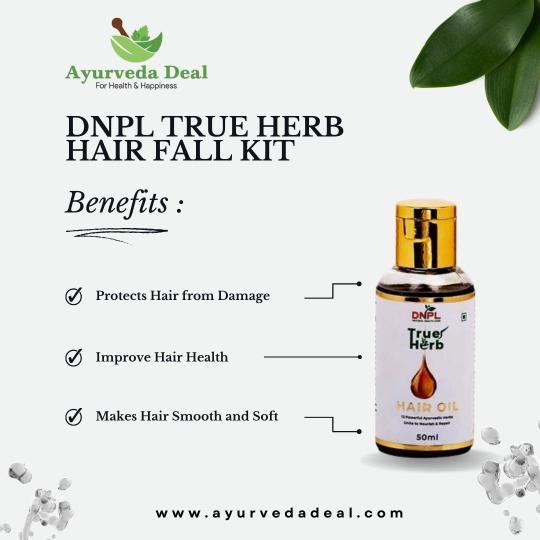
DNPL True Herb Hair Fall Kit
Benefits :
Protect Hair Damage
Improve Hair Health
Makes Hair Smooth & Soft
Best Ayurvedic Treatment For Hair Loss & Hair Fall Problems - Mobile : +91-800 640 0747 | E-mail : [email protected] | Website : https://rb.gy/zczui
#ayurveda deal#hair care#natural hair#hair oil#hair loss treatment for men#hair loss treatment#hair fall treatment#ayurvedic hair treatment
0 notes
Text
How do holistic approaches like nutrition and exercise complement traditional anxiety treatments?
Holistic approaches, such as nutrition and exercise, can complement traditional anxiety disorder treatments, including anxiety treatment in Ayurvedic practices. While nutrition and exercise are not standalone replacements for professional medical advice and intervention, they can be valuable components of a comprehensive treatment plan that addresses various anxiety-related conditions such as illness anxiety disorder, obsessive-compulsive disorder (OCD), panic disorder, phobia, post-traumatic stress disorder (PTSD), and more.
Neurotransmitter Regulation:
Nutrition: A balanced diet rich in omega-3 fatty acids, B vitamins, and magnesium supports the production and regulation of neurotransmitters associated with mood, benefiting individuals undergoing anxiety disorder treatment.
Exercise: Incorporating physical activity, including yoga classes in Delhi, can stimulate the release of endorphins, providing a natural mood lift and aiding in the regulation of neurotransmitters.
Stress Reduction:
Nutrition: Antioxidant-rich foods combat oxidative stress associated with anxiety disorders. Maintaining stable blood sugar levels through a balanced diet can prevent mood swings and reduce stress.
Exercise: Regular physical activity, alongside Ayurvedic approaches, contributes to stress reduction by lowering cortisol levels and promoting relaxation through practices such as meditation therapy.
Sleep Improvement:
Nutrition: Foods rich in tryptophan and complex carbohydrates support better sleep, a critical aspect of anxiety treatment in Ayurvedic practices.
Exercise: While incorporating Ayurvedic principles, engaging in regular physical activity, avoiding intense exercise close to bedtime, can positively impact sleep quality for individuals dealing with anxiety disorders.
Cognitive Function:
Nutrition: Optimal cognitive function, essential for managing anxiety, is supported by a nutrient-rich diet that benefits concentration and cognitive performance.
Exercise: Physical activity, complemented by Ayurvedic approaches, has been linked to enhanced cognitive function, addressing cognitive challenges associated with anxiety disorders.
Routine and Discipline:
Nutrition and Exercise: Establishing a routine for healthy eating and regular exercise, combined with Ayurvedic principles, provides structure and discipline. This structured approach can be empowering for individuals undergoing anxiety treatment.
For those seeking Ayurvedic interventions, exploring resources like the Patanjali Hospital in Delhi may offer a comprehensive approach to anxiety disorder treatment. Integrating Ayurveda with conventional methods, such as medication and therapy, can provide a holistic approach to addressing the diverse aspects of anxiety disorders. Individuals must collaborate with healthcare professionals to develop a personalized treatment plan that aligns with their specific needs and preferences.
#anxiety disorders treatment#anxiety treatment in ayurvadic#anxiety treatment#illness anxiety disorder#obsessive compulsive disorder#panic disorder#phobia#post traumatic stress disorder#Ayurvedic hospital in delhi#patanjali hospital delhi#yoga classes in delhi#Meditation Therapy
2 notes
·
View notes
Text
Revitalize Your Skin
Revitalize Your Skin: The Art of Ayurvedic Abhyanga Oil Massage"
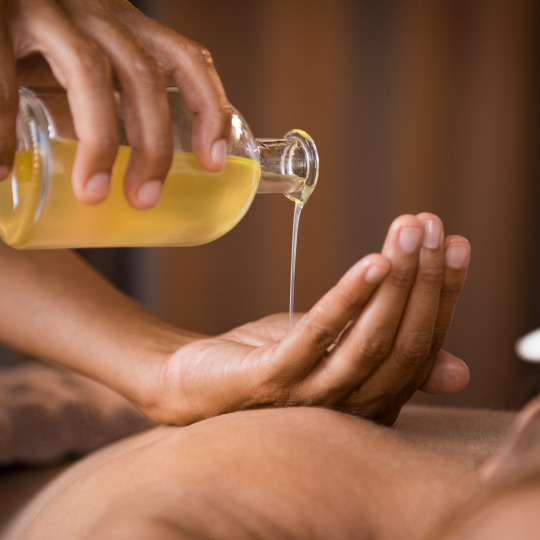
In the hustle and bustle of our daily lives, it's easy to overlook the importance of self-care and nurturing our skin. But what if I told you there's a centuries-old practice that not only rejuvenates your skin but also promotes overall wellness? Enter Ayurvedic Abhyanga oil massage—an ancient art that has stood the test of time, offering a holistic approach to skincare and well-being.
The Essence of Ayurveda:
Ayurveda, the ancient system of medicine originating in India, places a strong emphasis on maintaining balance within the body, mind, and spirit. Abhyanga, a key component of Ayurvedic self-care, involves the therapeutic application of warm, herb-infused oil to the body. This practice is not just a beauty ritual; it's a profound method to nourish and revitalize your skin while promoting inner harmony.
The Benefits:
Deep Hydration: Ayurvedic oils penetrate deep into the layers of the skin, providing intense hydration. This helps combat dryness, flakiness, and dullness.
Improved Circulation: The rhythmic and intentional massage strokes of Abhyanga stimulate blood flow, promoting better circulation. This, in turn, enhances the delivery of nutrients to skin cells and encourages detoxification.
Stress Reduction: The soothing nature of the massage calms the nervous system, reducing stress and promoting relaxation. As stress is a common culprit for skin issues, this can significantly contribute to a clearer complexion.
Lymphatic Support: Abhyanga aids in lymphatic drainage, helping to flush out toxins and reduce inflammation. This can be particularly beneficial for those dealing with puffiness and skin conditions related to inflammation.
How to Perform Ayurvedic Abhyanga Oil Massage:
Choose the Right Oil:
Sesame oil is a popular choice for its warming properties.
For a cooling effect, opt for coconut or sunflower oil.
Infuse the oil with herbs like lavender, chamomile, or neem for added benefits.
Prepare Your Space:
Find a quiet and comfortable space where you won't be disturbed.
Warm the room slightly to enhance the soothing experience.
Warm the Oil:
Place the oil in a warm water bath to achieve a comfortable temperature.
Begin with a Self-Prayer:
Take a moment to set an intention for your self-care practice.
Start at the Extremities:
Begin massaging your limbs, moving towards the heart in gentle, circular motions.
Focus on the Joints:
Pay extra attention to joints, such as the knees, elbows, and ankles, using circular motions.
Massage the Abdomen:
Use clockwise motions over the abdomen to support digestion.
Allow the Oil to Absorb:
Leave the oil on your skin for at least 15–20 minutes to allow absorption.
Follow with a Warm Shower:
Rinse off the excess oil with a warm shower, using a mild soap if needed.
Conclusion:
Incorporating Ayurvedic Abhyanga oil massage into your self-care routine isn't just about achieving radiant skin; it's a commitment to your overall well-being. Embrace this ancient practice as a ritual of self-love, and let the nourishing benefits ripple through your body, mind, and spirit. Your skin will thank you, and so will your inner balance.
#ayurveda#ayurvedic medicine#ayurvedic massage#restoration wellness#wellness#healthy lifestyle#health and wellness#ayurvedicmedicine#aromatherapy#skin care#skin care tips
2 notes
·
View notes
Text
What are 7 ways to boost your immune system?
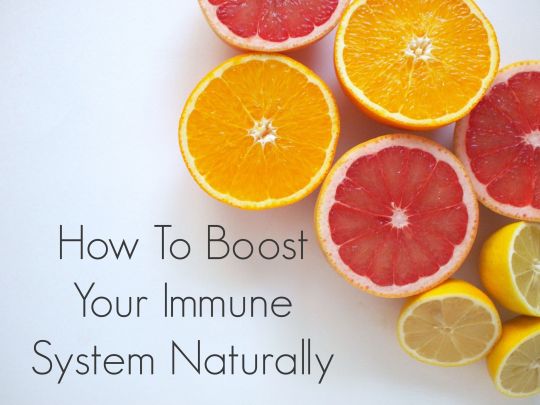
Immune system is the body’s defence mechanism that helps in fighting with different life threatening microscopic organisms, chronic diseases and disorders.
Duties and responsibilities towards family members and society, financial pressure and stress do not let us think and act in a positive way and stay healthy.
Such unavoidable circumstances are taking control of our life. We are inclined towards eating fast and processed food items, smoking nicotine and different types of prohibited drugs and drinking alcohol.
As a result, we do find ourselves trapped in different diseases in different parts of the body.
Let’s understand the signs of weak immune system and these are:
a) Constantly suffering from cough and cold.
b) High level of stress
c) Excessive stomach problem
d) Wounds not easily healing.
e) Intense infections.
f) Easily getting tired.
Instead of spending huge amounts of money on medicines and treatment of the immunocompromised diseases like cancer, diabetes, hepatitis and other intestinal disorders, it is recommended to rely on Ayurveda. In fact, Ayurveda happens to be rewarding for your health. To achieve strong immune system, you need to maintain:
a) Healthy liver function.
b) Good digestive ability.
c) Good hormonal and ojas balance.
d) Strong metabolism
Ayurveda would suggest you to go for simple steps for boosting immunity in the body
a) Maintaining a proper diet: It is the foremost thing to maintain healthy immune system. Depending on the deficiency of kapha, vat and pitta doshas, you must actually select and eat the right food items. Most important thing is to boost and protect ojas and that is by consuming different types of nuts, raisins, dates, saffron and ghee. Adding garlic in your regular diet will help in removing toxins from the body and help you to fight cough and cold.
b) Adequate sleep: Depending on the health condition , there is a need for proper balanced sleep. If you are suffering from kapha dosha then you must have 6 to 7 hours of sleep. Person suffering from vata dosha would require 8 hours of sleep. It will help in recovering from any type of joint pain. Person undergoing the problem of pitta dosha would have moderate sleep, not high as a vata dosha patient nor little as kapha dosha..As per the studies of researchers, adequate amount of sleep reduces the development of cancer.
c) Waking up early: Coming in contact with the rising sun boosts Vitamin D for the body. Further, it sharpens your memory and keeps your body and mind active.
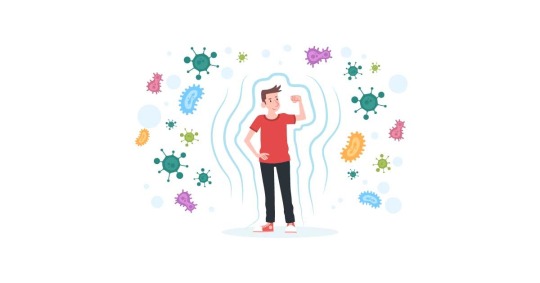
d) Exercise and yoga: Regular exercise and yoga in the morning hours before taking bath and breakfast will help in bringing relief from the toxins from the body. It will boost blood circulation and good gut health. Dancing, swimming, running, doing push ups and squatting are some exercises that one can adopt and practice on a daily basis. One can deal with cough and cold and nerve related disorders with the help of pranayama or simple breathing exercise.
e) Reduce stress: To wipe out the stress level from the body, you can engage in the activities that appeal to you or you find them interesting. You can travel to your favourite destination where you can get the opportunity to connect with nature. Meditation is another way of fighting stress. Ayurveda suggests to go for herbal steam therapy to reduce the stress hormone, boost blood circulation and nerves of the brain and body. Oil massage on the body and forehead is highly effective in reducing stress.
f) Manage rising weight: Weight management is another way to control obesity. To stay healthy for a long period of time, one should not be too obese or too thin. Or else, you will suffer from cardiovascular problems, high cholesterol and high blood pressure. Too much thinness will lead to deficiency of iron, vitamins and other necessary nutrients.
g) Staying hydrated: Drinking 8 to 12 glasses of water will cleanse the body from the toxins, boost healthy bowel movement and control dehydration, diarrhea and intestinal disorders
Above mentioned ways strengthen your immune system. As per the experts’ opinion, your strong bonding with nature will help to gain key to healthy life.
#public health#yoga#immune system#health tips#health#healthy lifestyle#obesity#stress#immunity booster
6 notes
·
View notes
Text

Since every embodied individual consists of a body, a mind and a spirit, the ancient rishis (sages) of India who developed the science of life organized their wisdom into three bodies of knowledge: Ayurveda, which deals mainly of the physical body; yoga, which deals primarily with the spirit, and tantra, which deals primarily with the mind. {Robert Svoboda}
#art#lotus#true being#true nourishment#self knowledge#q#robert svoboda#ayurveda#yoga#tantra#mysticism#holistic healih#holistic health#herbalism#yogi#contemplation#mindfulness#meditation
10 notes
·
View notes